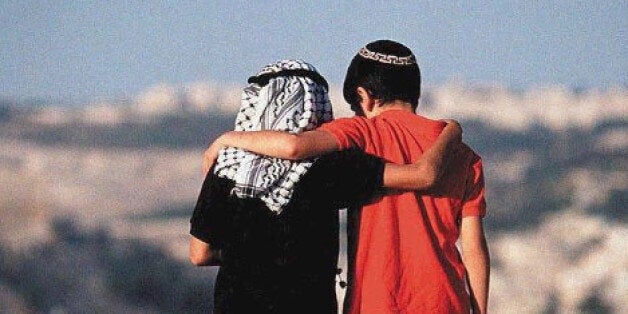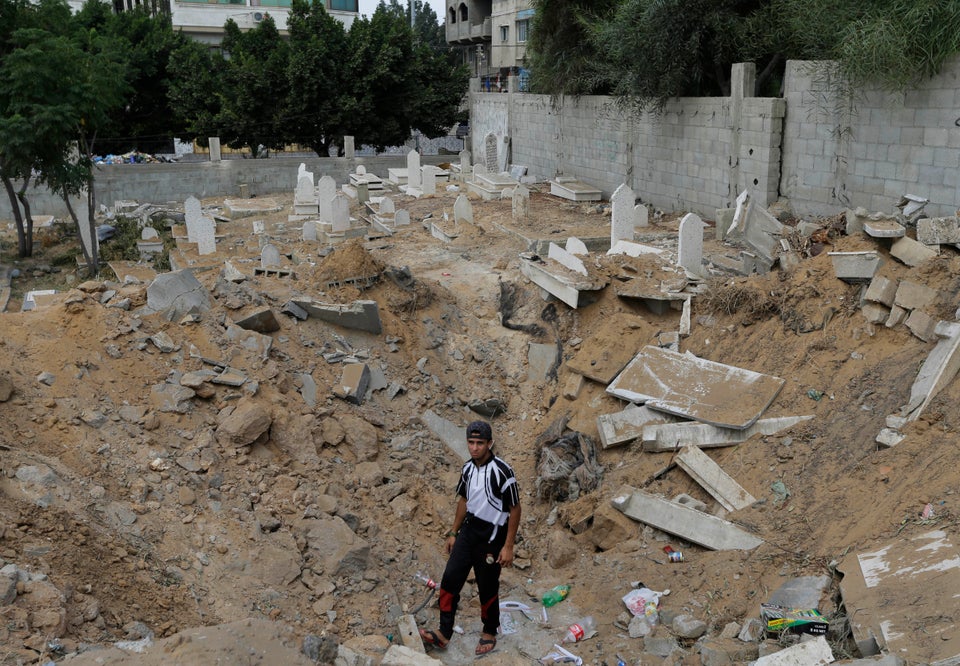
At the heart of every conflict lies a misunderstanding, often influenced by cultural biases and preconceived notions of acceptable behavior. When left uncorrected, misunderstandings can quickly escalate into false narratives that promote prejudice and segregation.
Cultural diplomacy can help challenge misconceptions and reconcile differences that underlie conflicts. Although its potential has thus far been ignored in the Israeli-Palestinian conflict, the time is ripe to experiment with additional diplomatic tools.
Diplomacy comes in two tracks. "Track-one" diplomacy is the government-mediated activity seeking cooperation and communication with another nation. "Track-two" diplomacy is typically non-governmental and includes initiatives such as cultural diplomacy. The current military conflict between Hamas-controlled Gaza and Israel is an unfortunate example of "track one" diplomacy failing to produce long-term solutions. Truces and ceasefires are welcome but are mere interludes in an ongoing war that is deeply intertwined with cultural and religious dimensions.
Dating back to the Bronze Age, cultural diplomacy has been used by both governments and civil society to preserve intergroup relations. It has been credited with playing a significant role in Soviet-American rapprochement during the Cold War. This included cultural exchange programs where American and Soviet writers, artists and musicians met to discuss and promote their work. The exchange of U.S. and Chinese table tennis players in the early 1970s - informally known as "ping-pong diplomacy" - also demonstrated the utility of cultural interaction between the East and the West, eventually leading to President Nixon's first visit to Beijing and the thawing of Sino-U.S. relations.
Similarly, art can challenge taboos and engage audiences in non-violent dialogue. In Dancing in Jaffa, a documentary about pairing Israeli and Palestinian children as dance partners, the ballroom dancer and instructor Pierre Dulaine demonstrated how dance can help children overcome prejudice and build ties with one another.
Heartbeat, an Israeli-Palestinian ensemble of youth musicians based in Israel, offers mentoring programs, workshops and retreats for Israeli and Palestinian musicians to "build critical understanding and transform conflict through the power of music." In April 2008, Dutch composer Merlijn Twaalfhoven sought to challenge Israeli and Palestinian experiences of division by bringing together musicians from Ramallah and Bethlehem, as well as children from the West Bank, to perform on rooftops and balconies across the Separation Wall in Bethlehem.
Similarly, the West-Eastern Divan, an orchestra based in Seville, Spain, brings together young Israeli and Arab musicians to promote cultural understanding and dialogue through their music. As a Divan musician put it, "The orchestra is a human laboratory that can express to the whole world how to cope with the other." Founded in 1999 by an Israeli-Argentine conductor and a Palestinian-American scholar, the orchestra has played all over the world, including in Ramallah in the Occupied Territories.
Cultural diplomacy can also help tackle what Norwegian sociologist Johan Galtung called "structural violence", that is, the existence of social structures, such as institutionalized racism. Educational exchanges, such as the Fulbright program in the U.S. or the Erasmus program in Europe, can help participants develop first-hand appreciation for a host's culture and thus challenge social structures at home. Similar programs could be developed where young Israeli and Palestinian students spend a period of time studying across their respective borders under the auspices of international organizations to encourage mutual understanding of each other's culture, society and religion.
As long-term investments, these programs have the potential to shape the hearts and minds of future Israeli-Palestinian generations so as to promote tolerance and peaceful co-existence.
Culture has also been used as a method to cope with conflict. For example, Tawfik Gebree, a Palestinian based in Gaza, has turned pictures of Israeli air strike smoke into sketches. One of the sketches replaces twin outbursts of smoke into a 'V' sign, arguably representing peace or victory. Across the border, Israeli artist and blacksmith Yaron Bob creates symbols of peace, such as roses, out of rockets and steel artillery fired from Gaza into Israel. Recycling war products into symbolic messages of non-aggression highlights the potential for culture to mediate a citizen-led solution to the conflict.
In the age of the Internet, the instantaneous propagation of cultural expressions presents threats and opportunities. Anyone with an Internet connection and a minimal modicum of creativity can attract an audience and exert cultural influence. From the creation of racially-charged memes to cleverly-worded (but highly bellicose) tweets, cultural responsibility does not begin and end with the politician or the rocket launcher, but also extends to every man and woman behind a screen. The sharing of divisive material online reproduces a cultural reality that only serves to preserve the status quo and prevent broader peaceful dialogue.
In the digital world, anyone can be a cultural diplomat. With the help of social media, citizens on both sides of the border and others around the world have the power to shape the debate and develop a conciliatory culture through their music, art, digital presence and other cultural manifestations.
Cultural diplomacy ought to be considered by all stakeholders in the Israeli-Palestinian conflict as an important tool in effort for peace. More needs to be done to encourage, fund and promote cultural diplomacy initiatives. Granted, cultural diplomacy will not resolve the conflict overnight. Cultural change will likely be incremental. But by combining long-term projects, such as educational exchanges, with responsible everyday interactions, cultural diplomacy can offer an additional channel for peaceful dialogue, free from the strategic constraints of politics and war.

